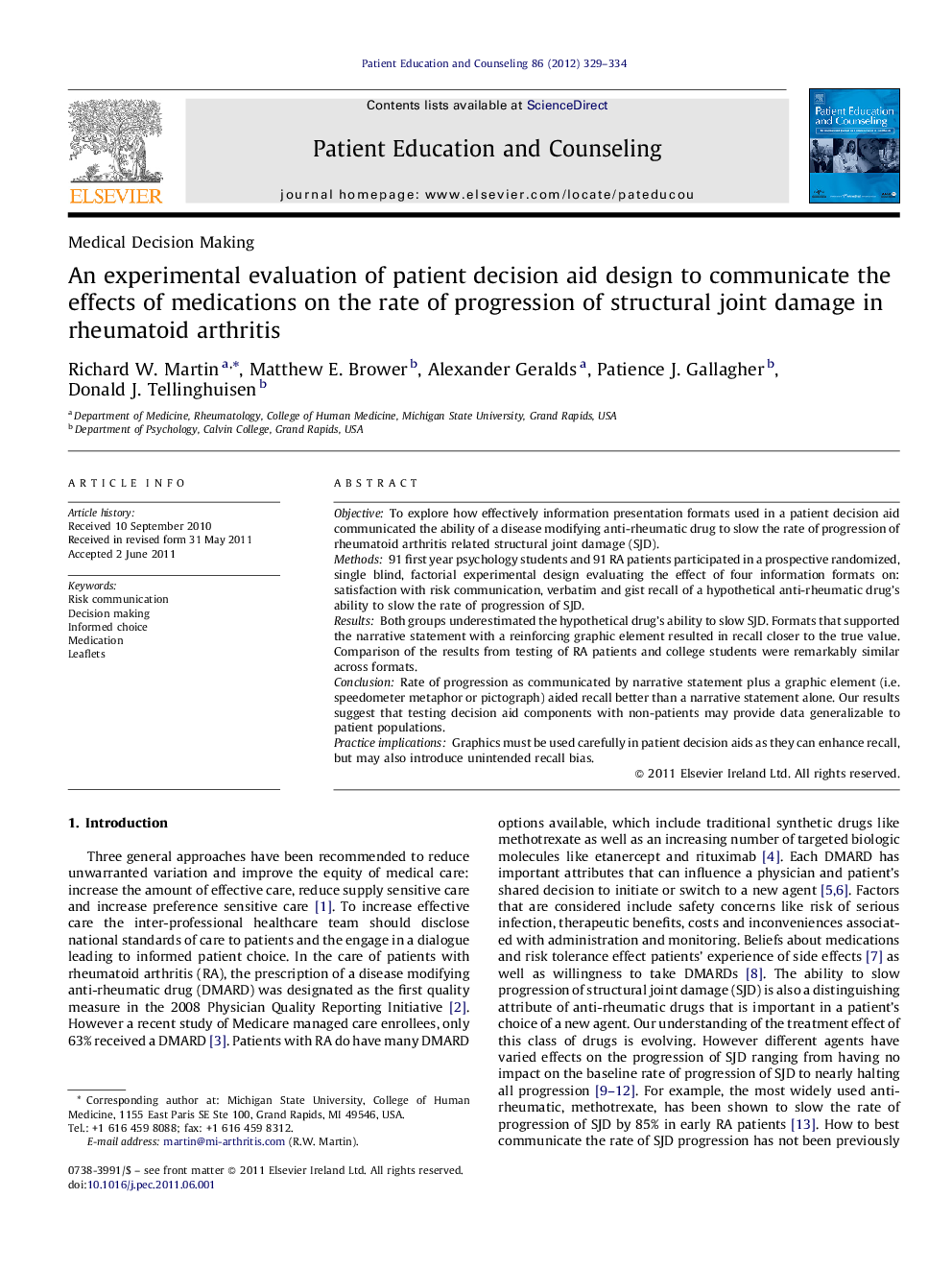| Article ID | Journal | Published Year | Pages | File Type |
|---|---|---|---|---|
| 3813654 | Patient Education and Counseling | 2012 | 6 Pages |
ObjectiveTo explore how effectively information presentation formats used in a patient decision aid communicated the ability of a disease modifying anti-rheumatic drug to slow the rate of progression of rheumatoid arthritis related structural joint damage (SJD).Methods91 first year psychology students and 91 RA patients participated in a prospective randomized, single blind, factorial experimental design evaluating the effect of four information formats on: satisfaction with risk communication, verbatim and gist recall of a hypothetical anti-rheumatic drug's ability to slow the rate of progression of SJD.ResultsBoth groups underestimated the hypothetical drug's ability to slow SJD. Formats that supported the narrative statement with a reinforcing graphic element resulted in recall closer to the true value. Comparison of the results from testing of RA patients and college students were remarkably similar across formats.ConclusionRate of progression as communicated by narrative statement plus a graphic element (i.e. speedometer metaphor or pictograph) aided recall better than a narrative statement alone. Our results suggest that testing decision aid components with non-patients may provide data generalizable to patient populations.Practice implicationsGraphics must be used carefully in patient decision aids as they can enhance recall, but may also introduce unintended recall bias.
